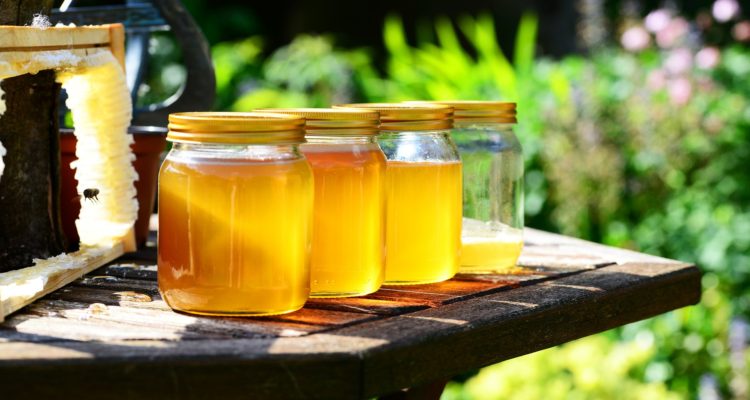◊ By Shineel
Visit ORGANIC SHOP by Pure & Eco India
Honey is considered to be the oldest, purest and most everlasting elixir of life. It has been a part of human life since 2100 BC and it’s difficult to imagine life without this yummy treat.
The versatility and enzyme action of honey makes it the perfect natural substitute for sugar in desserts and beverages.
But this golden elixir is very commonly tampered with by some producers, which ultimately leads to the production of fake honey.
3 WAYS IN WHICH FAKE HONEY IS PRODUCED
- By boiling a mixture of honey and sugar water to make it look like honey.
- By injecting the hives with sugar supplements.
- By keeping sugar water near beehives for the bees to feed on and produce honey.
These tactics not only cause harm to bees, which are crucial for our ecosystem, but also are harmful for the body. Consumption of sugar-spiked honey leads to various diseases such as blood pressure, anxiety, high blood sugar, etc.
So, how does one distinguish real raw honey from the fake stuff?
HOW TO IDENTIFY REAL HONEY
- Authentic raw honey is a little cloudy as it is not processed or filtered.
- Real honey is never too runny and has thick consistency.
- Natural unadulterated honey solidifies in cold weather.
- When raw authentic honey is mixed in warm water with a spoon, it looks like a blob in the beginning but then gets dissolved completely in seconds.
Moreover, honey that is available all year round and still looks the same through the seasons is definitely not authentic as raw honey production is dependent on the flowering season of the plant, which leads to difference in texture, colour and taste.
HEALTH BENEFITS OF
UNIFLORAL/MONOFLORAL HONEY
Authentic honey is an excellent digestive, a rich source of antioxidants and serves as an effective home remedy for cough, sore throat, etc.
One of the healthiest types of honey is unifloral or monofloral honey.
Unifloral honey is produced when all the nectar that the bees collect to produce honey is collected from the flowers of a single plant species. For instance, the nectar collected from the flowers of fennel will be used to make only fennel honey. This also means that this honey is produced only during the flowering season of that particular plant.
What makes unifloral honey special is the fact that as it is produced from the flowers of only one type of plant, it offers not only the benefits of honey but also of the vegetation from which the bees have imbibed.
The benefit of using the same vegetation is that the honey retains the anti-bacterial and anti-fungal properties of the flowering plant from which it is produced and acts as a naturally healing antioxidant.
Also, unifloral honey carries a distinct scent, taste and texture based on the nectar of the flowers it is produced from and the flowering season it is produced in, which completely differentiates it from multifloral honey (honey derived from the nectar of multiple plant varieties).
The author is Founder and CEO of
The House of Artisans (THOA).



Your article on Honey is good with some basic information on purity and authenticity. However, please note that to give the customer a product of same taste/texture/flavour/colour, round the year, companies spends lot of money to make a unique blend. This also requires under regulations (to produce the similar product throughout the year to get the batch to batch consistency).
There is a need to create awareness among customer about pure honey and make them understand that pure honey does solidify in low temperature.